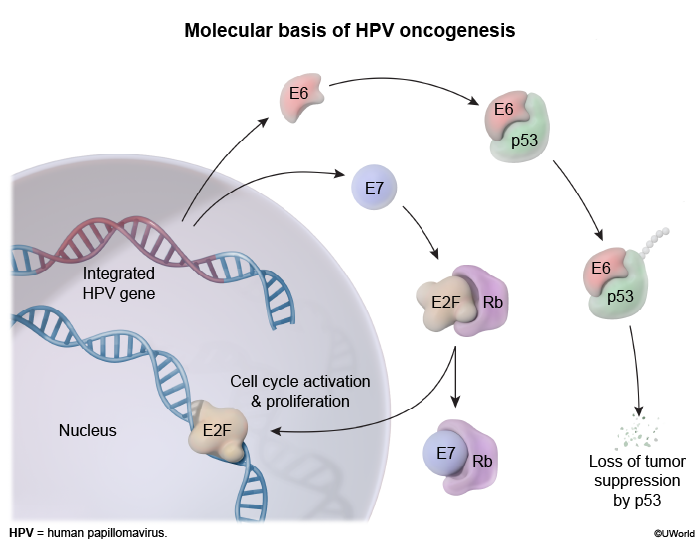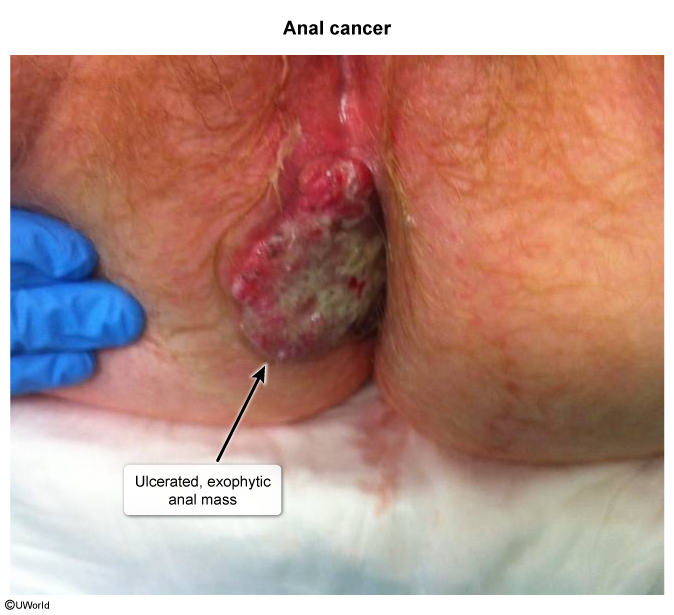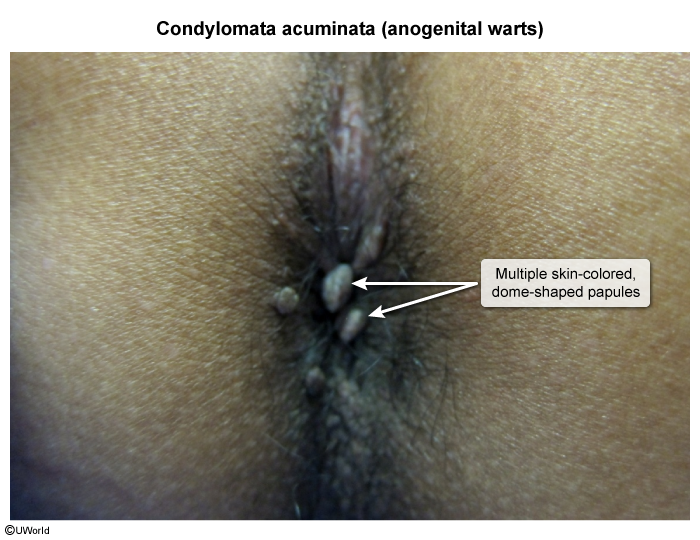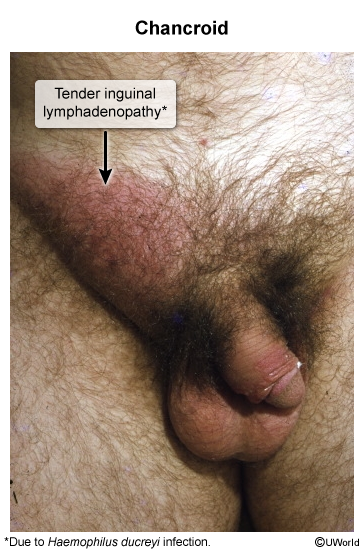Anal Cancer
Article Sections
Introduction
Anal cancer is a rare gastrointestinal malignancy that arises in the anus or anal canal and is strongly associated with human papillomavirus (HPV) infection. The risk is highest in individuals who engage in receptive anal intercourse, particularly men who have sex with men, and in those with advanced HIV infection (due to immunosuppression and a higher prevalence of persistent HPV infection). The most common histologic subtype is squamous cell carcinoma. Anal cancer often presents with bleeding, pain, and a sensation of anal fullness; physical examination classically shows a nodular, exophytic mass or an ulcerated lesion.
Pathogenesis
The majority of anal cancers are linked to oncogenic strains of human papillomavirus (HPV), a nonenveloped, double-stranded DNA virus transmitted through oral, vaginal, or anal sexual contact. HPV causes disease by infecting and replicating within squamous epithelial cells. Its oncogenic potential arises following integration into the host genome and subsequent expression of viral oncoproteins E6 and E7. These proteins inactivate the tumor suppressors p53 and Rb, respectively, disrupting cell cycle control and promoting neoplastic transformation (
Continue Learning with UWorld
Get the full Anal Cancer article plus rich visuals, real-world cases, and in-depth insights from medical experts, all available through the UWorld Medical Library.
Figures

Images


